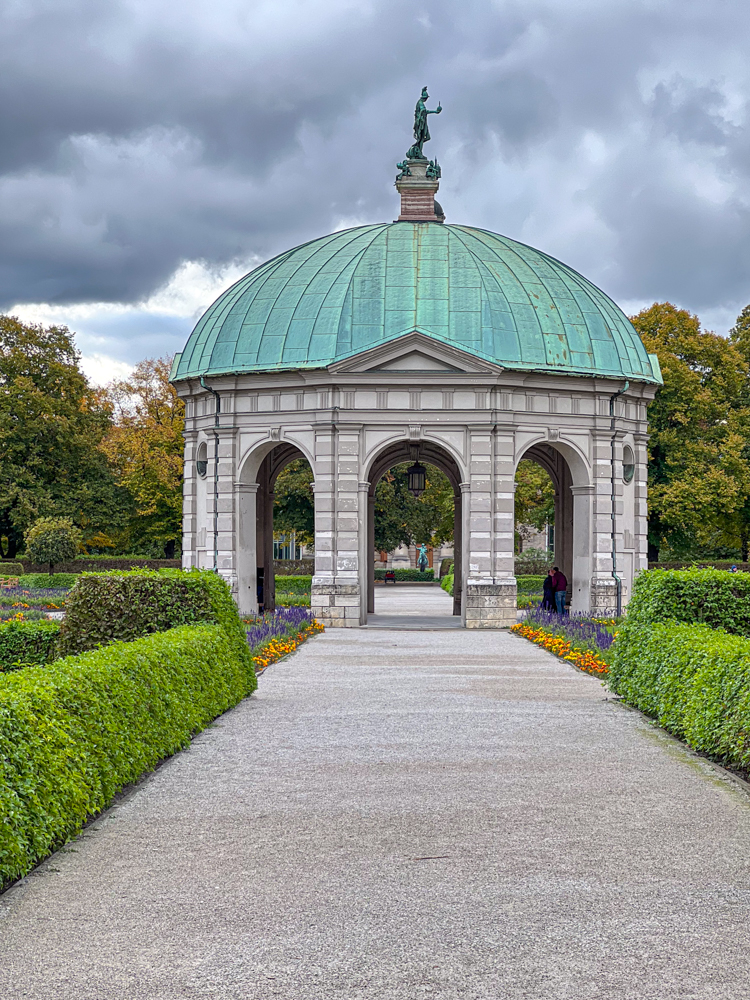The Hofgarten (Court Garden), is a historic garden located in the heart of Munich, Germany. It was created between 1613 and 1617 by Maximilian I, Elector of Bavaria1. Inspired by Italian Renaissance gardens, it was initially designed as a place for court festivities and was only accessible to dukes and electors. In 1780, Elector Karl Theodor opened the garden to the public, making it a popular destination for both locals and tourists.

The garden’s layout reflects its Renaissance origins, featuring:
- Symmetrical patterns and geometric designs
- Carefully manicured lawns and flower beds
- Lime trees lining the pathways
- Fountains and sculptures throughout the space
At the centre of the Hofgarten stands the Diana Pavilion, also known as the Temple of Diana, built in 1615 by Heinrich Schön the Elder. This dodecagonal structure features:
- Eight entrance archways
- A roof adorned with a replica of the “Tellus Bavaria” bronze statue, symbolizing Bavaria’s riches: water, crops, salt, and game
The garden is enclosed by impressive arcade-style passages:
- The northern arcade runs along Galeriestrasse, housing the Deutsche Theatermuseum
- The western arcade follows Ludwigstrasse and contains frescoes by pupils of painter Peter Cornelius
- An Elector (Kurfürst) was a prince of the Holy Roman Empire who held the prestigious right to participate in the election of the Holy Roman Emperor. This was one of the most powerful positions in medieval and early modern German politics. Initially, there were seven electors established, three ecclesiastical (archbishops) and four secular princes. Bavaria gained electoral status in 1623, when Maximilian I of Bavaria was granted the electoral title. The elevation of Bavaria to electoral status significantly altered the power dynamics within the Holy Roman Empire, enhancing Bavaria’s position as a leading German state, making it one of the most powerful territories within the Empire ↩︎
Leave a Reply